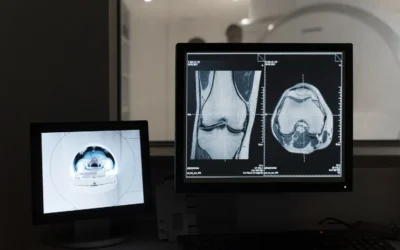Angiosarcoma of the liver is a rare but highly aggressive form of cancer that originates in the endothelial cells lining the blood vessels of the liver. Though accounting for less than 2% of all primary liver cancers, this malignancy carries a particularly grim prognosis due to its rapid progression and difficulty in early diagnosis. With an estimated annual incidence rate of 1 case per million individuals, angiosarcoma often goes unnoticed until it reaches an advanced stage, underscoring the necessity for early detection and specialized treatment strategies. In recent years, advances in diagnostic imaging and targeted therapies offer new hope, yet the overall survival rates remain low, necessitating continued research and awareness.
Table of Contents
Understanding Angiosarcoma: A Rare and Elusive Cancer
Angiosarcoma is part of a broader category of sarcomas—cancers that develop from connective tissues, such as blood vessels, fat, or muscle. Unlike the more common hepatocellular carcinoma, which arises from liver cells, angiosarcoma targets the endothelial cells of the vascular system. The liver, with its dense network of blood vessels, becomes particularly susceptible to this type of malignancy.
One of the primary challenges in managing angiosarcoma of the liver is its vague symptomatology. Early stages of the disease often present with non-specific symptoms such as abdominal pain, fatigue, jaundice, or unintentional weight loss—symptoms easily mistaken for more common liver conditions like cirrhosis or hepatitis. By the time these symptoms become severe enough to warrant investigation, the cancer is often widespread, both within the liver and beyond.
A 2020 study published in The American Journal of Clinical Oncology emphasized the importance of heightened awareness among clinicians. Due to its rarity and overlapping symptoms with other hepatic diseases, misdiagnosis is a frequent issue. The study found that approximately 50% of angiosarcoma patients were initially diagnosed with benign liver conditions, delaying appropriate treatment by several crucial months.
Causes and Risk Factors: Industrial Exposures and Genetic Predispositions
While the precise cause of angiosarcoma of the liver remains unclear, several environmental and genetic factors have been linked to its development. Occupational exposure to specific chemicals, particularly vinyl chloride (used in plastics manufacturing), arsenic, and thorium dioxide (Thorotrast, an older radiographic contrast agent), has been strongly associated with the disease. A 2018 study published in Cancer Epidemiology highlighted that individuals exposed to vinyl chloride have a 220-fold increased risk of developing hepatic angiosarcoma compared to the general population.
Furthermore, individuals with pre-existing liver diseases such as hemochromatosis or cirrhosis may be at heightened risk. These conditions cause chronic inflammation and liver damage, creating a favorable environment for malignant cells to thrive. Genetic mutations in tumor suppressor genes like TP53 and KDR have also been identified in angiosarcoma cases, although these mutations are more often linked to sporadic rather than hereditary forms of the disease.
Diagnostic Challenges and Emerging Detection Techniques
One of the most significant hurdles in treating angiosarcoma of the liver is early detection. Unlike other cancers, there are no standardized screening protocols for angiosarcoma, particularly in populations not exposed to known risk factors. Diagnostic imaging techniques such as contrast-enhanced MRI and CT scans are critical for identifying liver lesions, but these are often ordered only when symptoms manifest. By this point, the tumor has usually metastasized, particularly to the lungs, spleen, and bones.
A groundbreaking 2021 study in Radiology explored the use of PET-CT imaging with radiolabeled tracers to detect metabolic changes in hepatic tissue earlier than traditional imaging modalities. This approach holds promise for earlier diagnosis, especially in high-risk groups, but remains in the research phase. Additionally, liquid biopsy—a minimally invasive blood test that detects cancer-associated genetic mutations and proteins—is emerging as a potential diagnostic tool for various sarcomas, including angiosarcoma.
Treatment Strategies: Surgery, Chemotherapy, and Targeted Therapies
The treatment of angiosarcoma of the liver requires a multidisciplinary approach, given the cancer’s aggressive nature and tendency to metastasize. Surgical resection, where part of the liver is removed, offers the best chance for long-term survival, particularly in localized cases. However, due to the often advanced stage at diagnosis, only a small percentage of patients are eligible for surgery.
Chemotherapy remains the primary treatment for patients with inoperable tumors or metastatic disease. Drugs such as paclitaxel, doxorubicin, and ifosfamide have shown some efficacy in controlling the growth of angiosarcoma, though responses are generally short-lived. In recent years, the advent of targeted therapies, which block specific pathways involved in cancer cell growth, has provided new treatment avenues. For instance, drugs targeting VEGFR (vascular endothelial growth factor receptor), a protein overexpressed in many angiosarcomas, have demonstrated promise in clinical trials.
Additionally, immunotherapy, which leverages the body’s immune system to attack cancer cells, is being explored. Although still experimental for liver angiosarcoma, checkpoint inhibitors like pembrolizumab, used successfully in melanoma and lung cancer, are undergoing trials in sarcomas, offering hope for future treatment options.
Prognosis and the Need for Continued Research
The prognosis for angiosarcoma of the liver remains poor, with five-year survival rates below 30%. Even in patients undergoing aggressive treatment, the likelihood of recurrence is high due to the cancer’s rapid spread. A study in The Journal of Hepatology noted that median survival time post-diagnosis is less than 12 months for most patients, reflecting the urgent need for novel therapeutic approaches and earlier detection methods.
Ongoing research into the genetic underpinnings of angiosarcoma is crucial. Identifying biomarkers that can predict disease development or recurrence may eventually lead to more effective screening and individualized treatments. Given the rarity of this cancer, global collaboration between cancer centers, clinical trials, and patient registries will be essential to accelerate progress.
Conclusion
Angiosarcoma of the liver remains one of the most challenging cancers to diagnose and treat due to its rarity, aggressive nature, and often subtle early symptoms. While advances in diagnostic imaging and targeted therapies offer some hope, early detection remains key to improving survival outcomes. Continued research, along with heightened awareness among healthcare providers, is critical in the fight against this devastating disease.
References
- Young RJ, Brown NJ, Reed MW, Hughes D, Woll PJ. Angiosarcoma. Lancet Oncol. 2010;11(10):983-991.
- Fayette J, Martin E, Piperno-Neumann S, et al. Angiosarcomas, a heterogeneous group of sarcomas with specific behavior depending on primary site: a retrospective study of 161 cases. Ann Oncol. 2007;18(12):2030-2036.
- Zheng YW, Zhang XW, Zhang JL, et al. Primary hepatic angiosarcoma and potential treatment options. J Gastroenterol Hepatol. 2014;29(5):906-911.
- Huang NC, Wann SR, Chang HT, Lin SL, Wang JS, Guo HR. Arsenic, vinyl chloride, viral hepatitis, and hepatic angiosarcoma: A hospital-based study and review of literature in Taiwan. BMC Gastroenterol. 2011;11:142.
- Locker GY, Doroshow JH, Zwelling LA, Chabner BA. The clinical features of hepatic angiosarcoma: a report of four cases and a review of the English literature. Medicine (Baltimore). 1979;58(1):48-64.
- Molina E, Hernandez A. Clinical manifestations of primary hepatic angiosarcoma. Dig Dis Sci. 2003;48(4):677-682.
- Park YS, Kim JH, Kim KW, et al. Primary hepatic angiosarcoma: imaging findings and palliative treatment with transcatheter arterial chemoembolization or embolization. Clin Radiol. 2009;64(8):779-785.
- Pickhardt PJ, Kitchin D, Lubner MG, Ganeshan DM, Bhalla S, Covey AM. Primary hepatic angiosarcoma: multi-institutional comprehensive cancer centre review of multiphasic CT and MR imaging in 35 patients. Eur Radiol. 2015;25(2):315-322.
- Weitz J, Klimstra DS, Cymes K, et al. Management of primary liver sarcomas. Cancer. 2007;109(7):1391-1396.
- Fury MG, Antonescu CR, Van Zee KJ, Brennan MF, Maki RG. A 14-year retrospective review of angiosarcoma: clinical characteristics, prognostic factors, and treatment outcomes with surgery and chemotherapy. Cancer J. 2005;11(3):241-247.





0 Comments